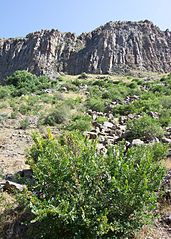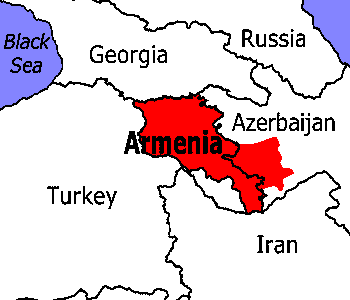Overview

Landscape in Armenia.
Today, five to six million people speak Armenian (Grimes 1992), although the total population of the Republic of Armenia is only 3.5 million (ninety three percent of whom are ethnic Armenian). Thus, nearly half of Armenian speakers today live outside their historic homeland, primarily in Iran (370,000), Syria (299,000), Lebanon (235,000), Egypt (100,000), and the United States (175,000).
The term Armenian can be used to refer to at least three different languages, each with its own dialects. It can refer to
- Classical Armenian (the older form of the language);
- Modern Western Armenian (developed in those regions of Armenia that are now Turkey and the variety spoken in the diaspora); and
- Modern Eastern Armenian (the language of the Republic of Armenia).
Armenian forms an independent branch of the Indo-European language family (Comrie, 1981). Armenian is most closely related to Greek, but has many borrowed words from such Indo-Iranian languages as Pushto and Persian?. In fact, during the very early periods of its classification, Armenian was erroneously considered an Iranian language because of its large number of Iranian loan words.
The Armenian Verb
Every verb stem has two forms, called bases. One is used for the simple past tense and past participle; the other is used for all other tenses, moods, and participles.

Language Family Tree
Indo-European > Classical Indo-European > Armenic- Eastern-Western Armenian
- [hye] Eastern Armenian
- [hyw] Western Armenian
- [xcl] Classical-Middle Armenian